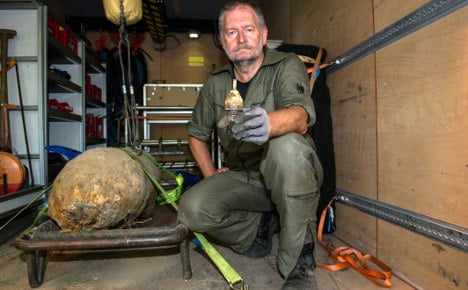Bombs, shells and other munitions totalling 54 tonnes were found and made safe in the city in 2014, BZ reported, adding to the 1.8 million explosive devices found since 1945.
Bomb disposal squads (Kampfmittelbeseitigungsdienst, KBD) are called out around 1,000 times each year in the German capital when unexploded weapons are found, usually during building work.
Large finds, such as the 250-kilo American bomb uncovered by builders in Potsdam in December, are becoming rarer – although when they do turn up, they cause mass disruption as thousands have to be evacuated from homes and offices.
Authorities had to evacuate 3,000 people from the area around a 500-kilo bomb found in Steglitz in June while it was defused.
And flights at Tegel airport were briefly disrupted in October when a 70-kilo bomb was found nearby.
Police say that most bombs left over from the Second World War pose little risk of exploding unless they are interfered with, although bombs with chemical fuses may be more dangerous.
And while the authorities are unable to say which parts of the city might be home to more leftover munitions, airports, train stations and lines and factories were the main targets.
The forests around Berlin, where German and Soviet forces fought fierce battles in the final months of the war, harbour a particularly large number of bombs and hand grenades.
In 2010 three members of bomb disposal team in Göttingen were killed, and another six people injured, when the Second World War bomb they were working to defuse exploded – making them possibly some of the final victims of the 1939-45 war.
SEE ALSO: 10,000 evacuated after Potsdam bomb find



 Please whitelist us to continue reading.
Please whitelist us to continue reading.
Member comments